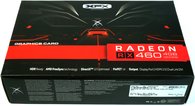 With the XFX RX460 4GB Passive Heatsink Edition (hereinafter as often called in trading XFX RX460 4GB Passive) XFX has a pretty hot iron in the fire. Whether this will also be a case for my pun box office or whether it relates only to technical implementation, we will see in a while.
With the XFX RX460 4GB Passive Heatsink Edition (hereinafter as often called in trading XFX RX460 4GB Passive) XFX has a pretty hot iron in the fire. Whether this will also be a case for my pun box office or whether it relates only to technical implementation, we will see in a while.
The card bears the typical look of the former iCooler cards from HIS, which we still knew as Radeon HD7750. It is astonishing that HIS – now a brand under the same roof as XFX (Pine) – no longer offers passively cooled AMD cards, but has turned to a very exotic single-slot solution. However, the cooler size and the slat orientation are clearly based on the older HIS models.
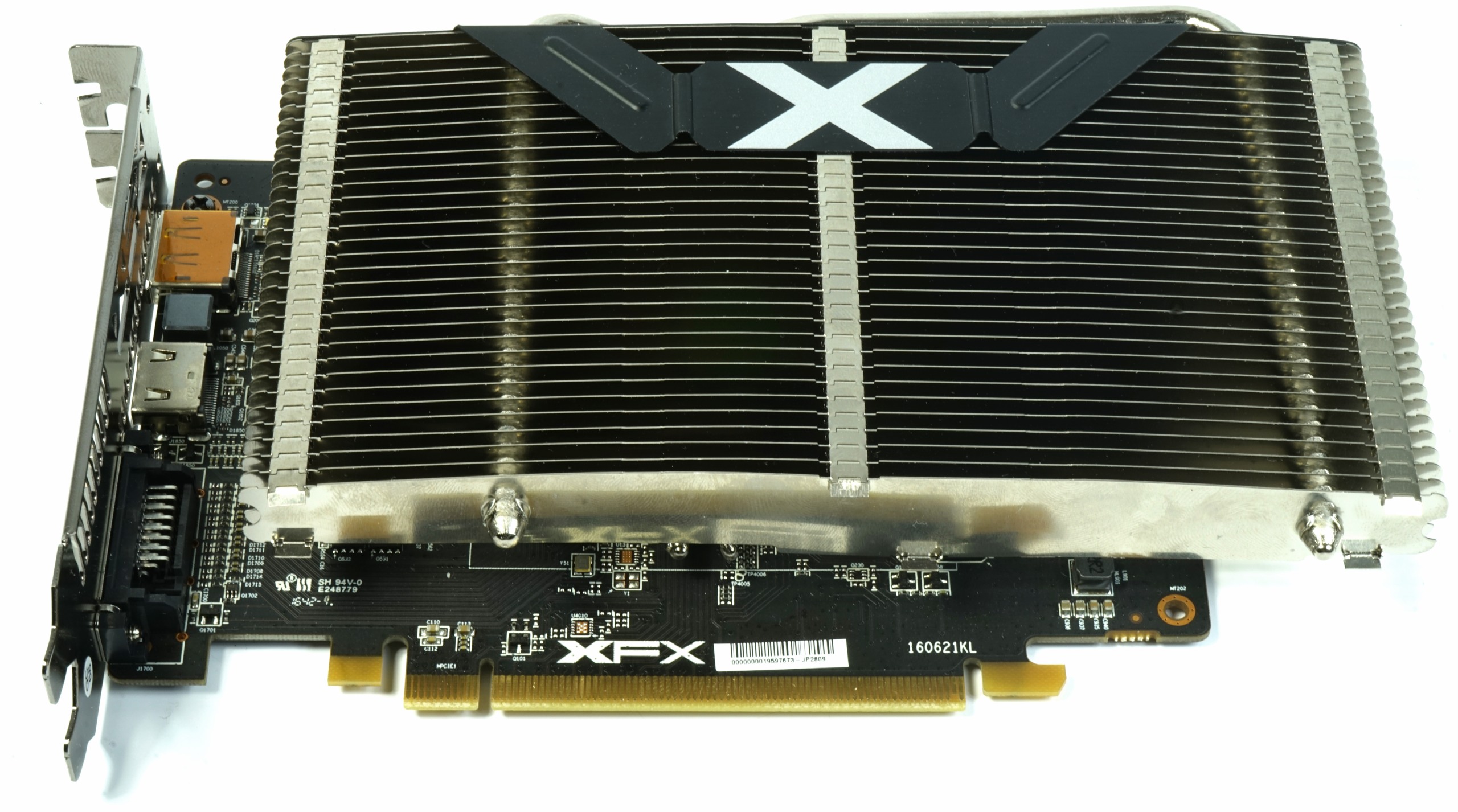
1. External appearance and key data
Ertser Impression: Small, cuddly and only 337 grams light. The cooler towers over the card a little and extends it to 20.2 cm (slot aperture to the end of the cooler). With its 12.5 cm height (upper edge slot to top heatpipe) it is still bearable high and requires two slots in depth with 3.5cm.
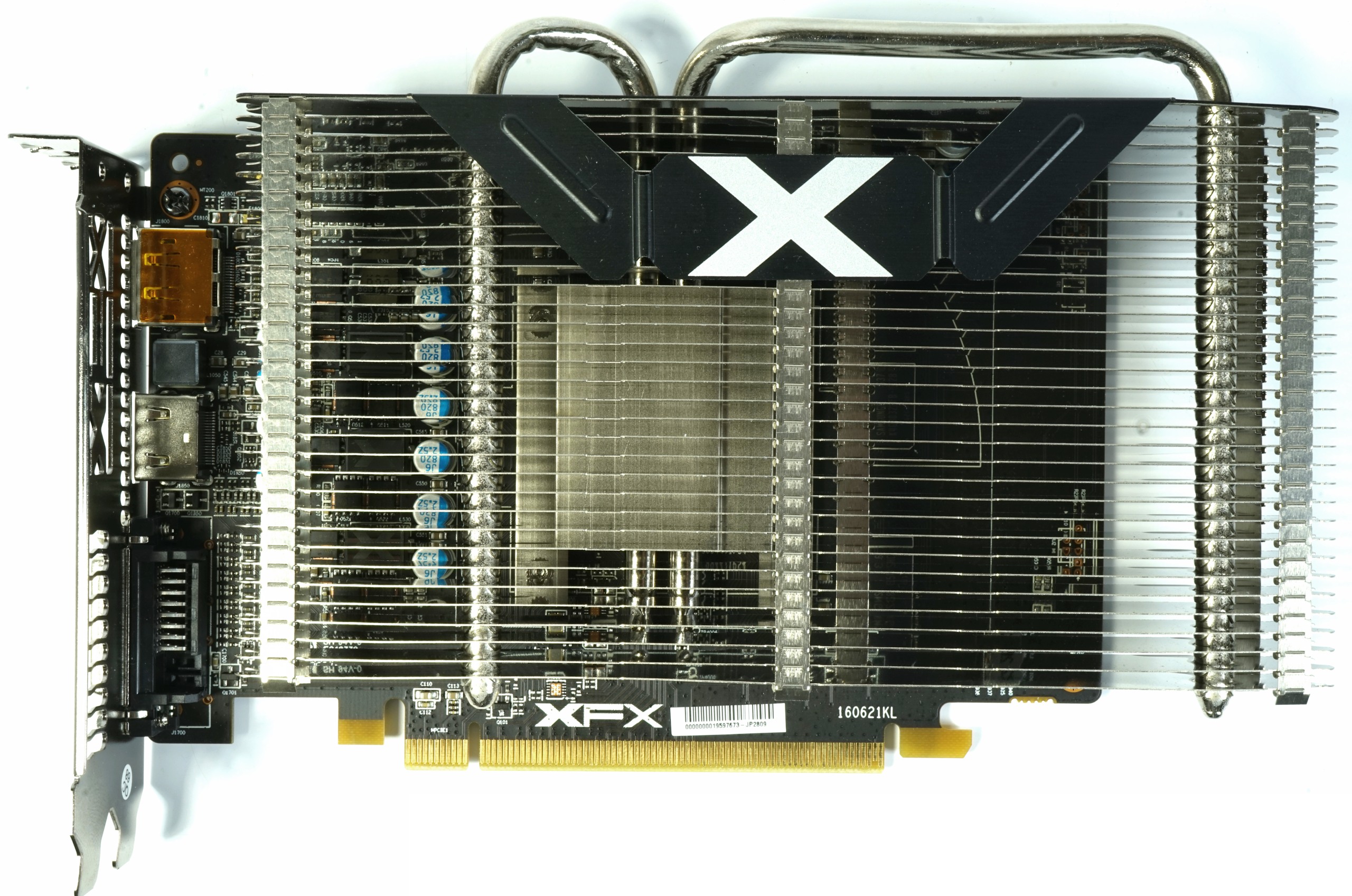 |
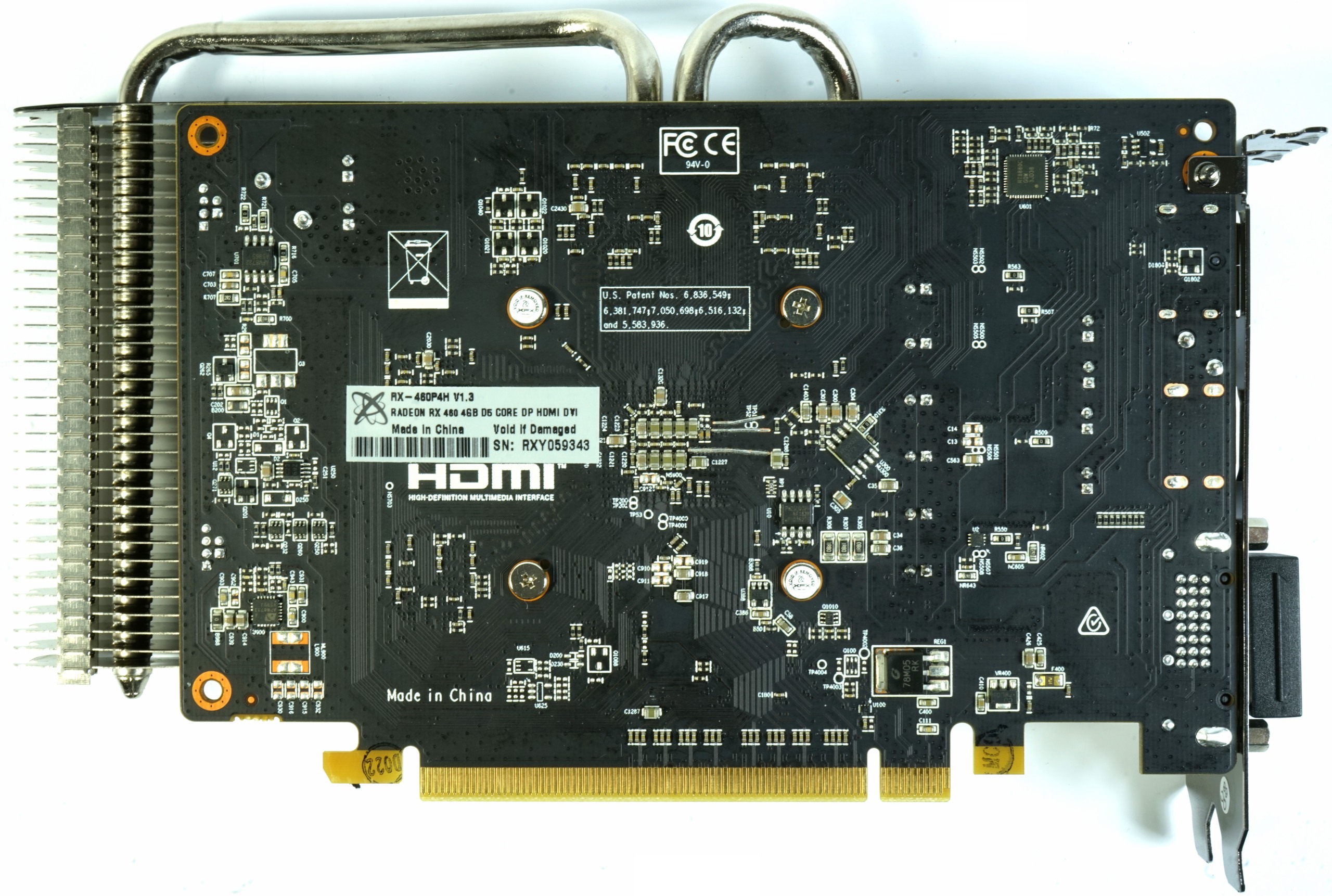 |
The back of the card reveals that the actual board is only 16.5 centimeters long. Thanks to us, XFX dispenses with a backplate and a radiator structure pulled around to the back. This avoids possible conflicts when installing in tight ITX projects.

At the bottom, the two nickel-plated 6 mm heatpipes end, which XFX runs along the top. The slat orientation of the cooling fins is horizontal, so that this guide became technically necessary, even if the map increased in height by almost three centimeters.

The end of the card is completely open as it should be for a passive solution. The slot aperture is a bit meagerly equipped and in return offers many openings for the air outlet. After all, there is a DVI-D connector, a DisplayPort 1.4 and an HDMI 2.0 output.
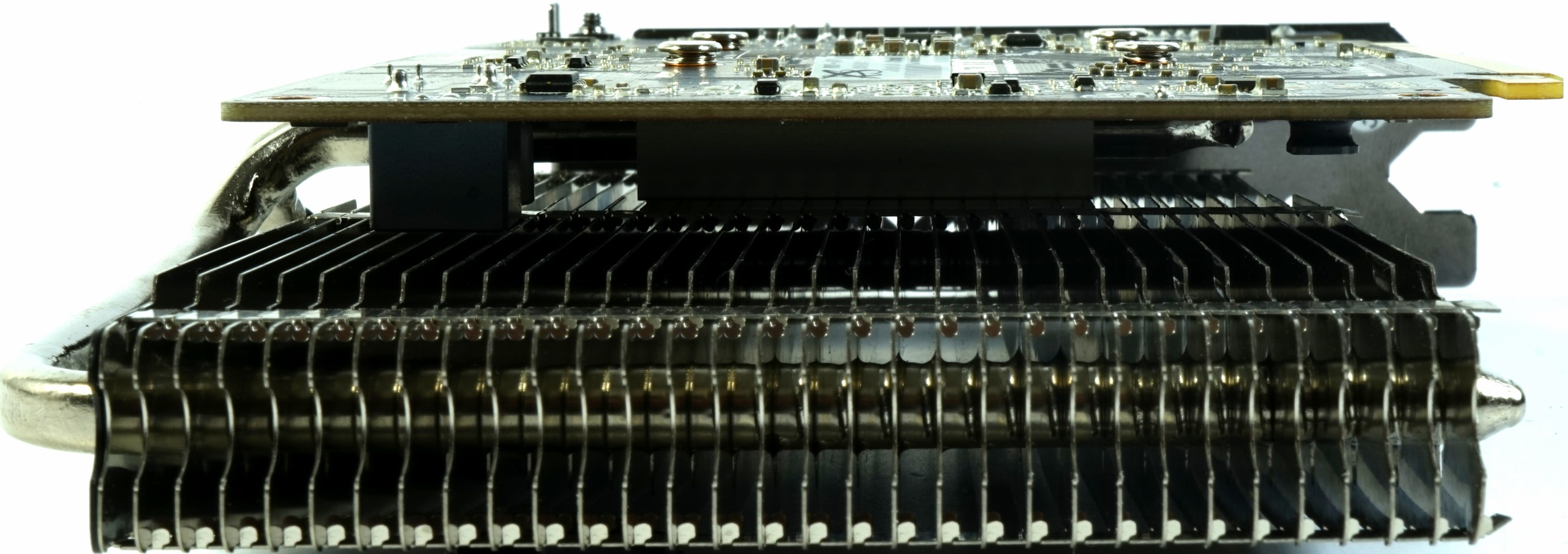 |
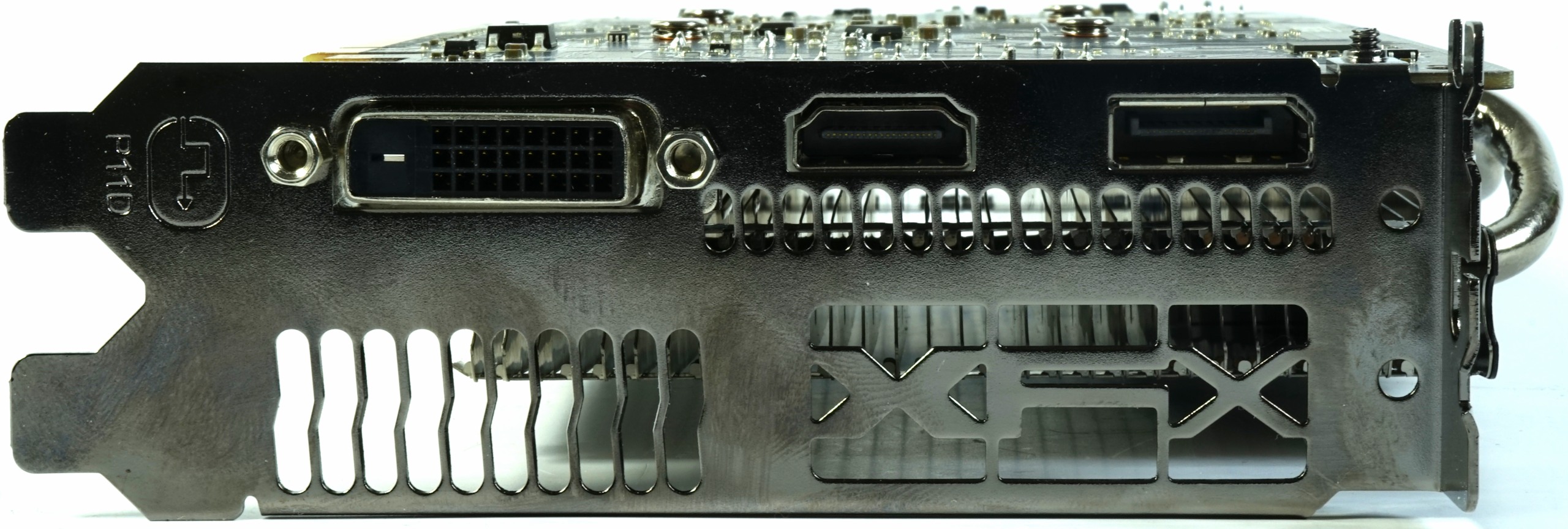 |
2. Board layout and power supply
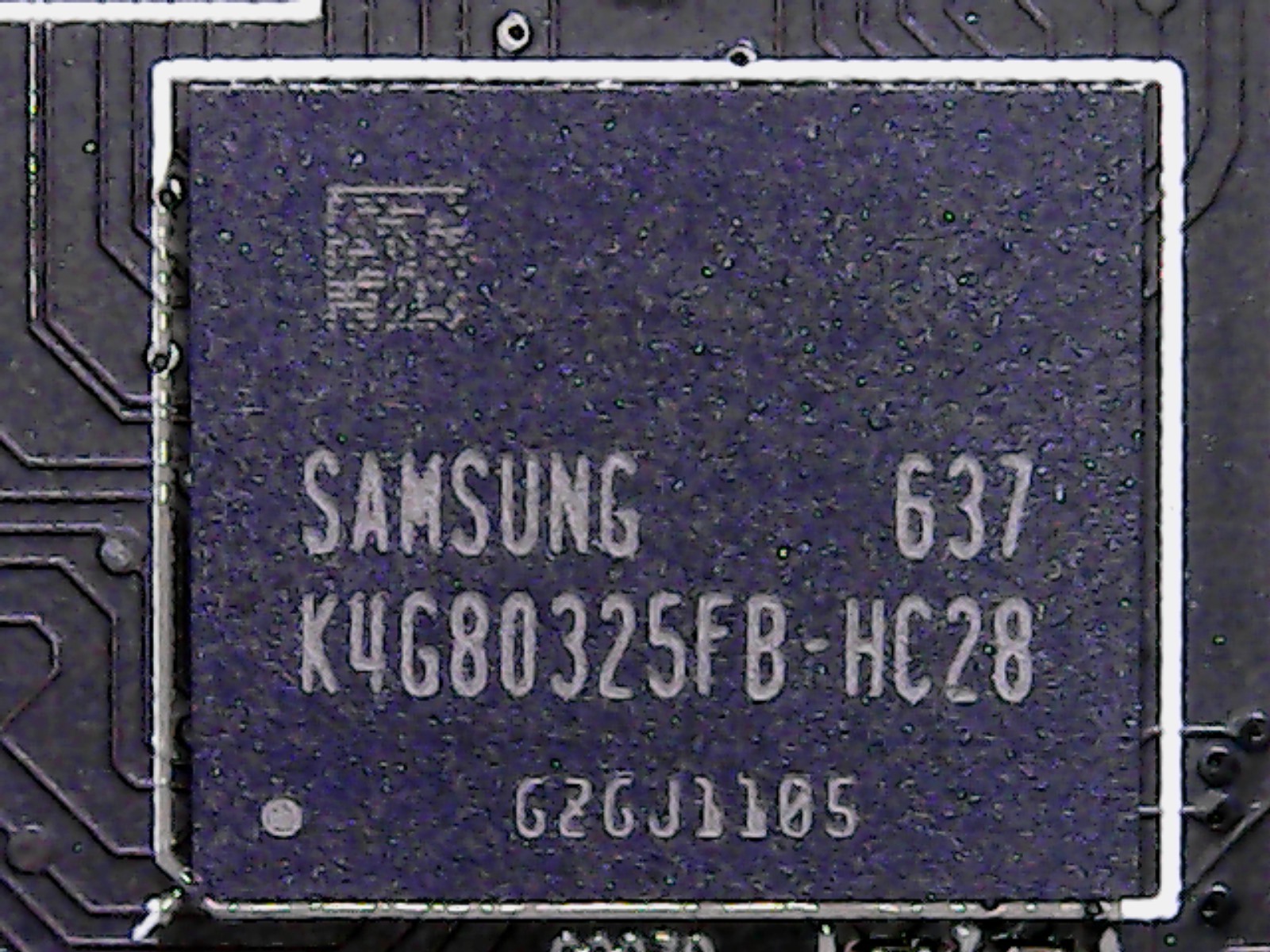 When looking at the naked board, it is noticeable that the voltage converter block has again completely moved towards the slot aperture. This makes perfect sense, because the power supply is only via the motherboard slot and there the 12V pins sit exactly at the beginning.
When looking at the naked board, it is noticeable that the voltage converter block has again completely moved towards the slot aperture. This makes perfect sense, because the power supply is only via the motherboard slot and there the 12V pins sit exactly at the beginning.
For memory, XFX relies on Samsung modules, following AMD's precept. The K4G80325FB-HC28 are individual modules with a capacity of 8 GBit (32x 256 MBit) each, which can be operated with voltages between 1.305 and 1.597 volts depending on the required clock and reach a maximum of 1750 MHz.
This makes you use slower modules than on the Radeon RX470, but this should definitely not be a disadvantage thermally – quite the contrary.
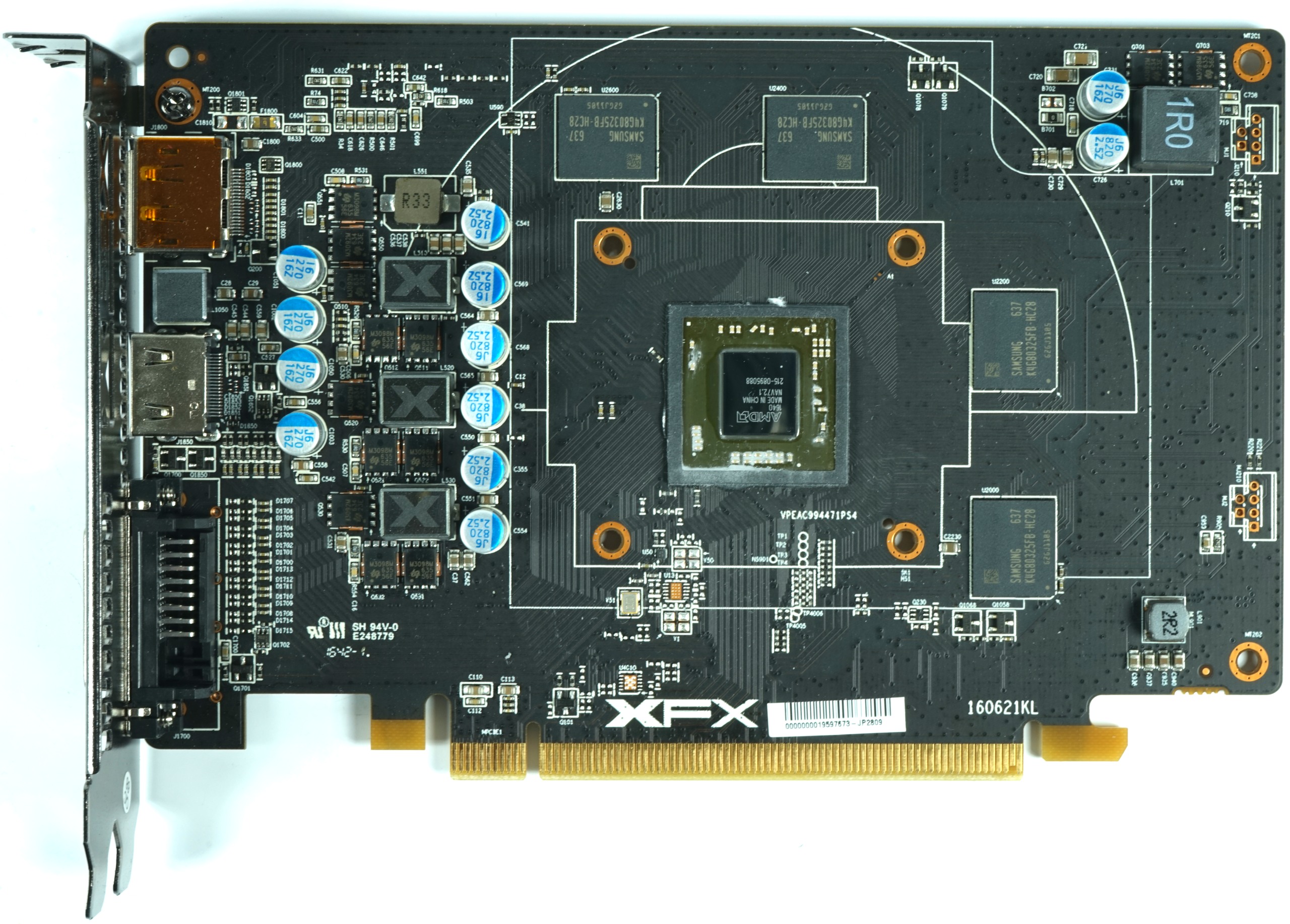
Let's take a closer look at the board. Here XFX makes an interesting trick with the Realtek TR8880. It is a true dual-output PWM controller with three built-in drivers for the three GPU phases, which can also control one phase for memory at the same time. This saves space and simplifies the layout not insignificantly. Which brings us to 3+1 phases.
Each of the three GPU phases is equipped with a single-N-channel MOSFET M3092 on the high-side and two Single-N-Channel MOSFETs M3098 on the low-side. The slightly carelessly shed ferrite shells of the coils are functional, but no real highlights. However, since the maximum 45 watts for the GPU are divided into these phases, the flowing currents should not be an insoluble task (even acoustically).
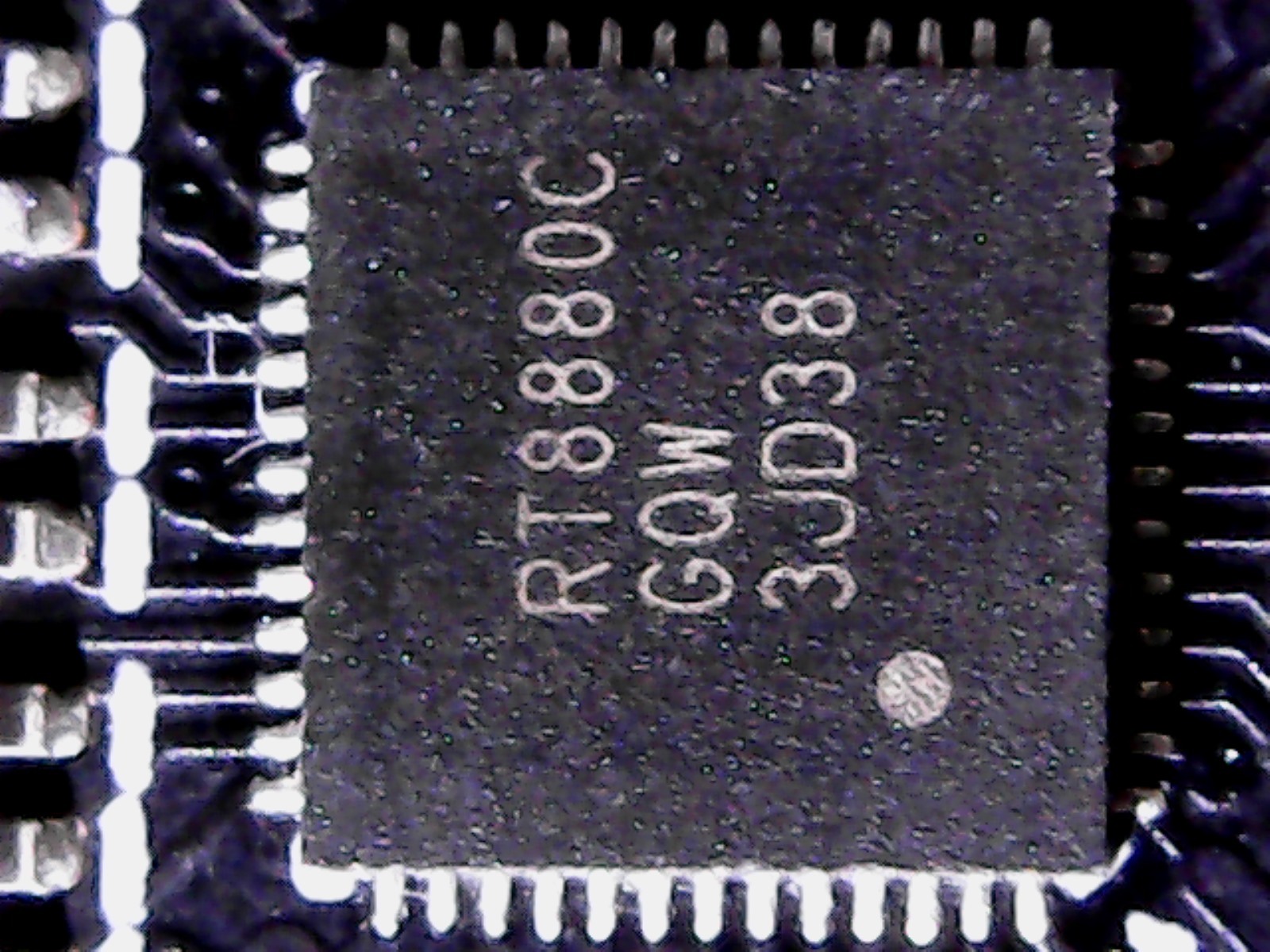 |
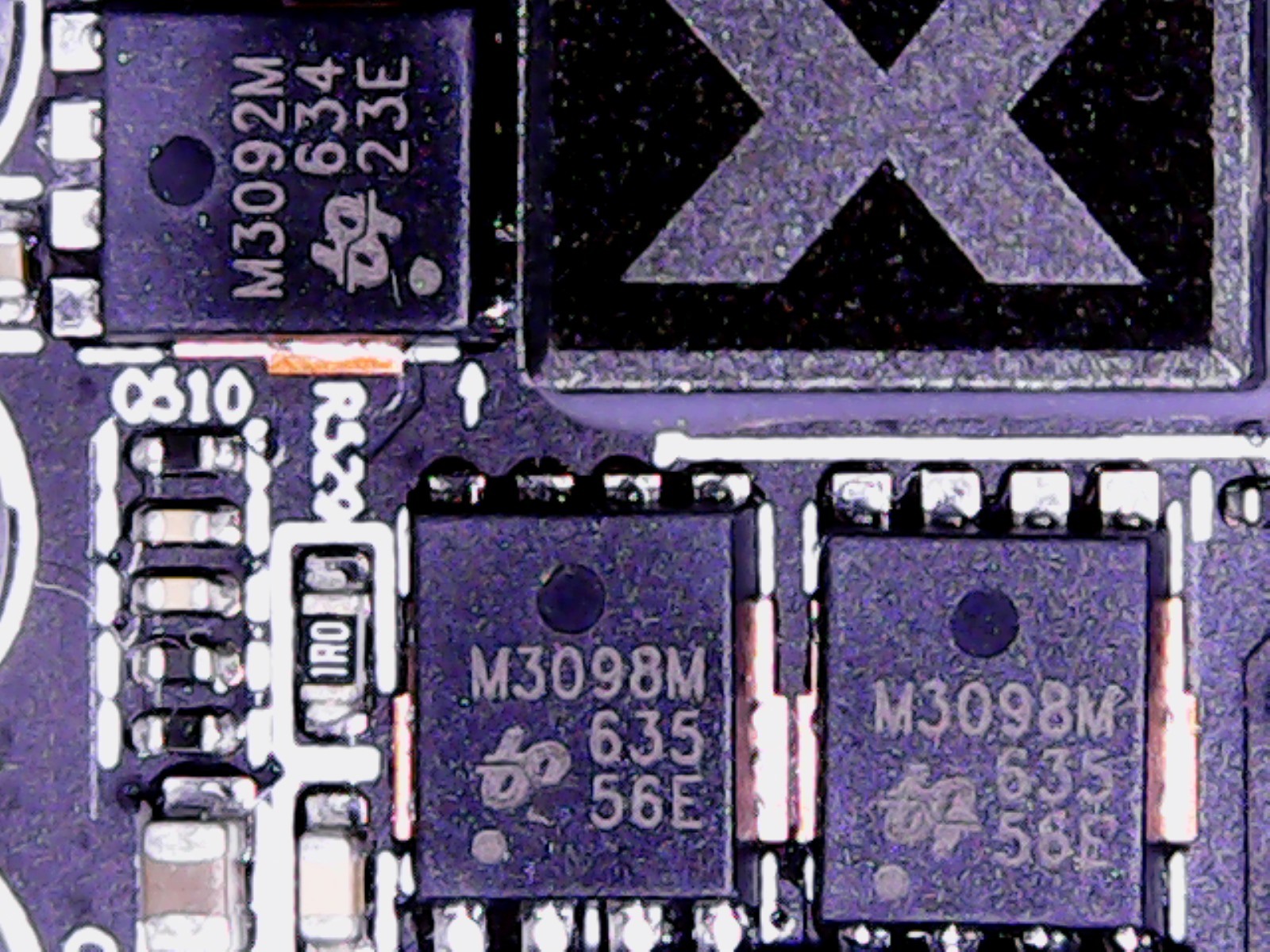 |
In memory, on the other hand, a single-N-channel MOSFET M3098 for high- and low-side as well as a smaller coil in the usual Foxconn style with a bottom-encapsulated cup are used quite conventionally.
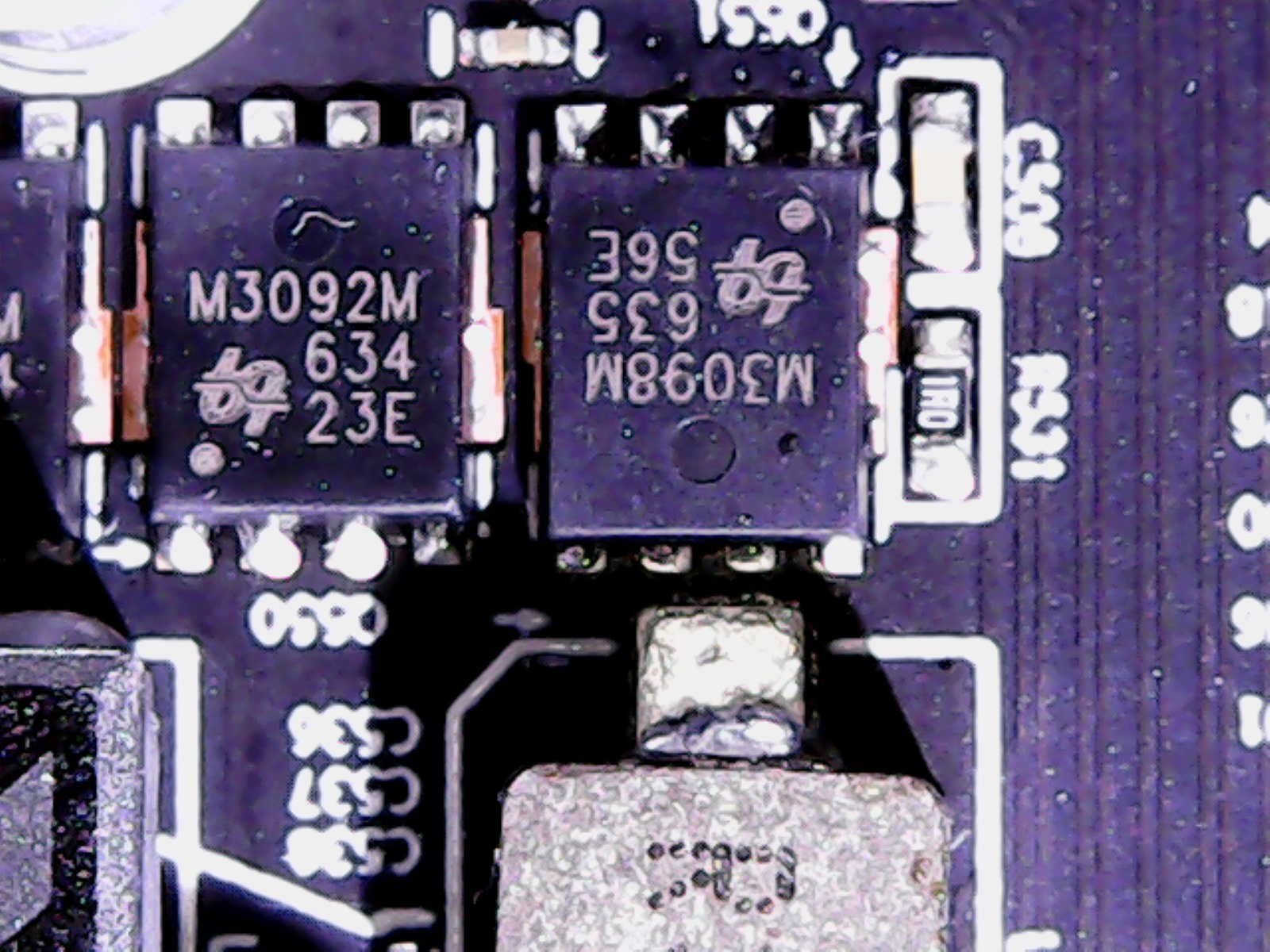
3. Power consumption and compliance
The power consumption is in manageable areas, which is the basic requirement for passive cooling. In the gaming loop, the map reaches a good 62 watts, while the Torture loop measured just over 58 watts. There is simply not much more to do with this card, whereby the peak values are only short moment values, which do not have to be used as a guideline for the power supply measurement.
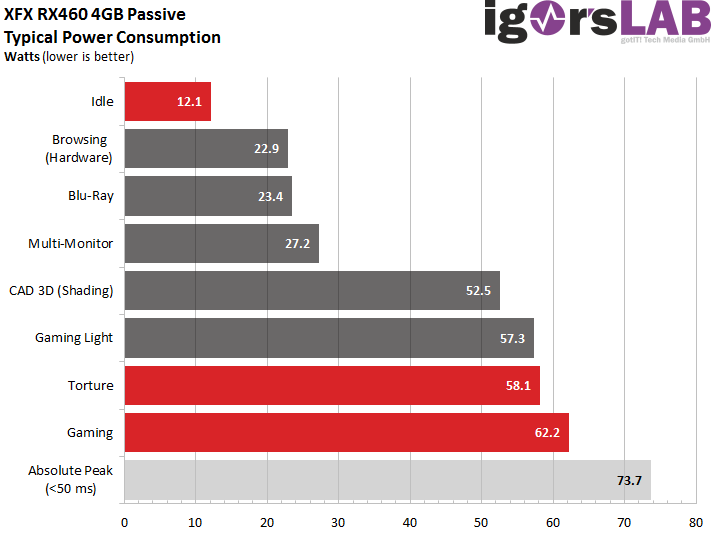
The two graphs that follow illustrate the gameplay over two minutes each in the gaming loop and in the Torture test, on which the respective calculation of the average power consumption is based.
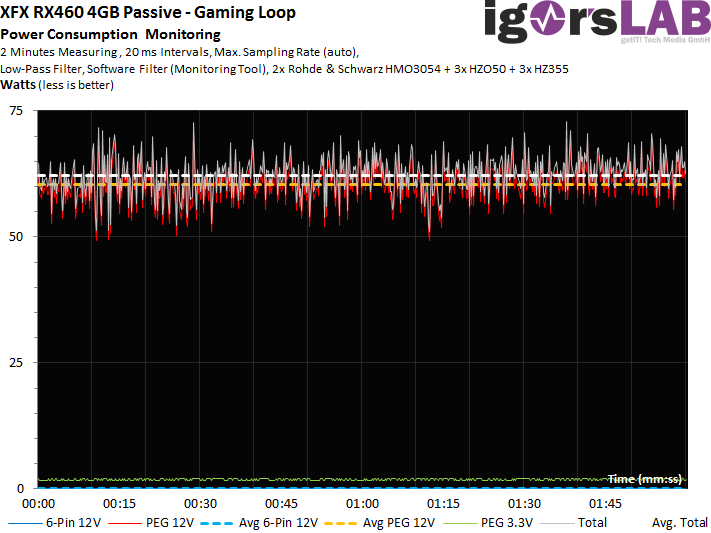 |
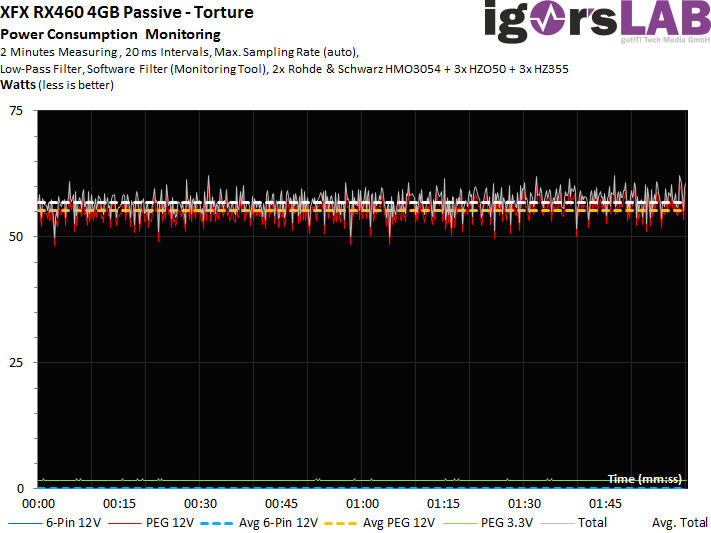 |
Let us now turn to the evaluation of the flowing currents, which in each situation are significantly lower than what the PCI SIG provides for the 12V main baord connection with a maximum of 5.5 amperes:
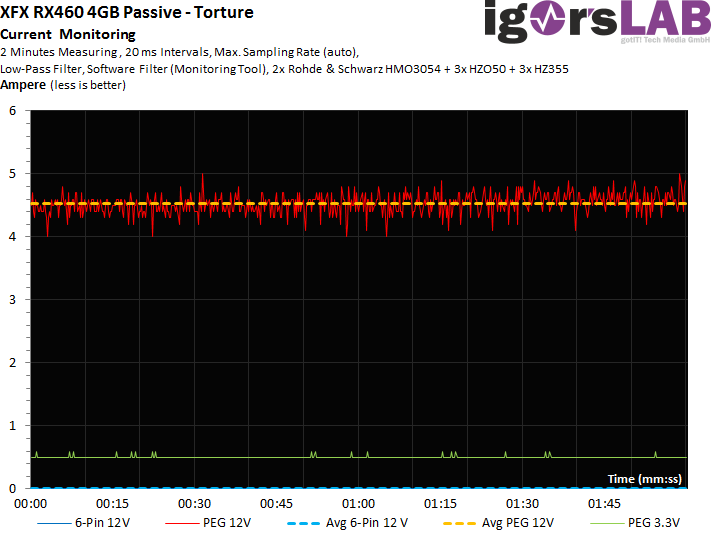 |
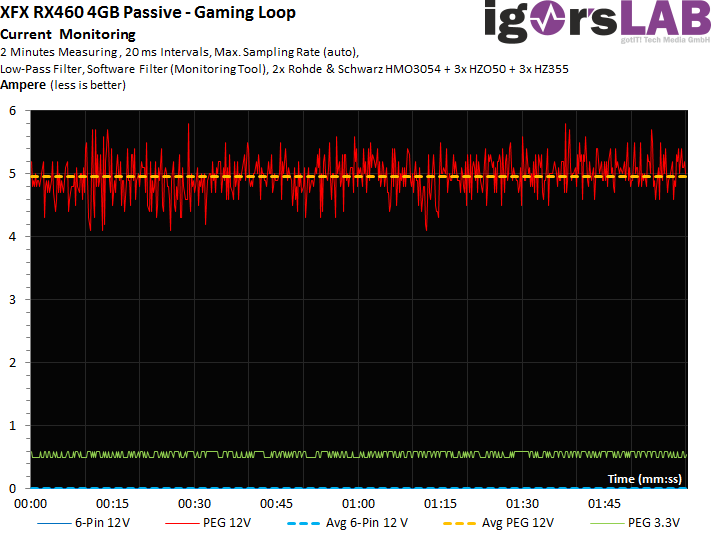 |
4th. Radiator construction
If you loosen the four screws on the GPU socket, the ultra-light cooler can be easily removed. We see a small but massive copper heat sink, between which and an above aluminum block the yeast-nickel-plated 6 mm heatpipes made of copper composite material were pressed in. The aluminium block bears the actual radiator construction, while the heatpipes are supposed to distribute the waste heat along the radiator fins better.
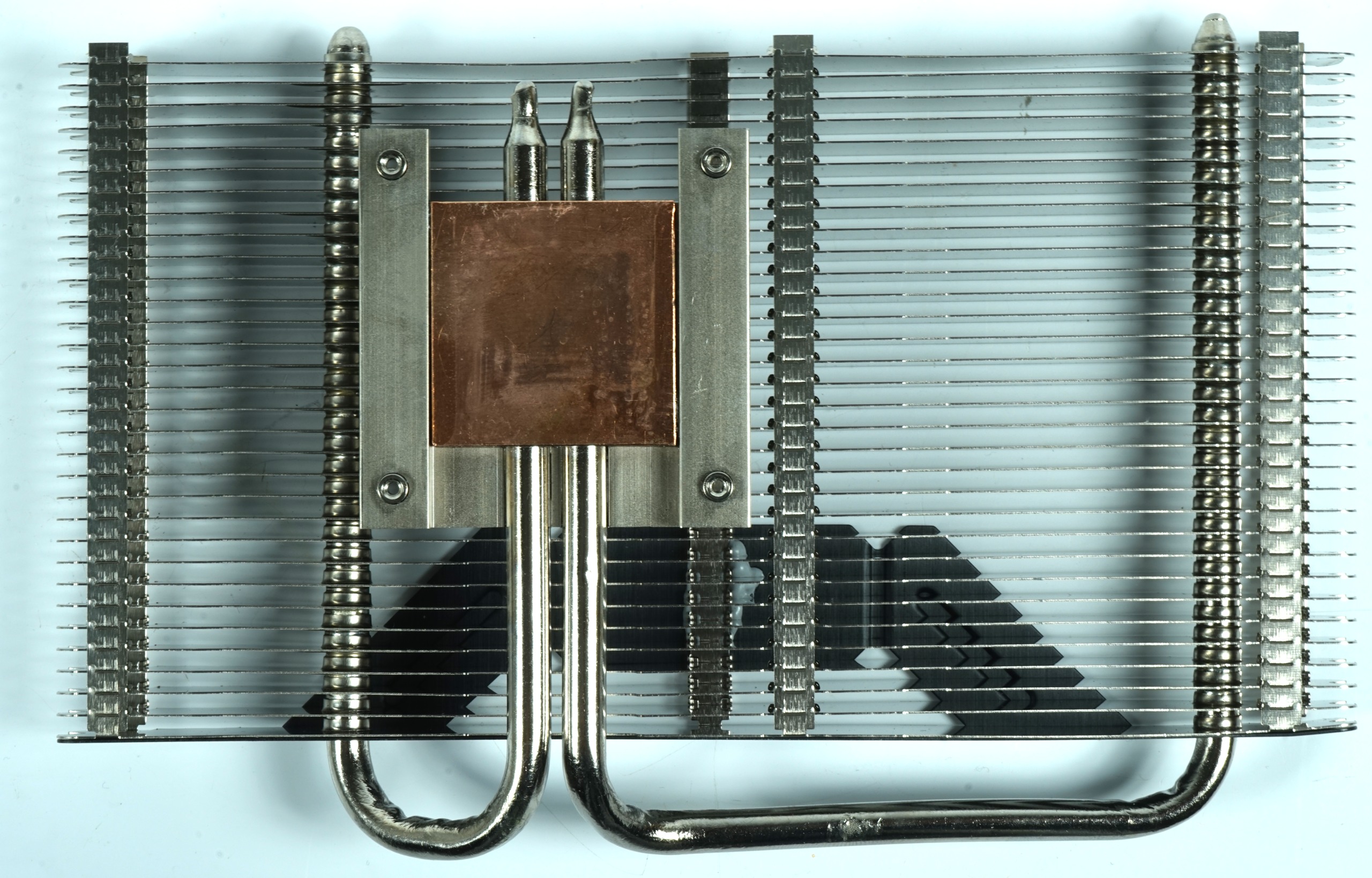
I want to find out how well the whole thing works later by using our measuring technology. In summary, however, the most important technical data is available again briefly as a tabular overview:


















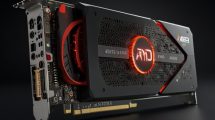














Kommentieren